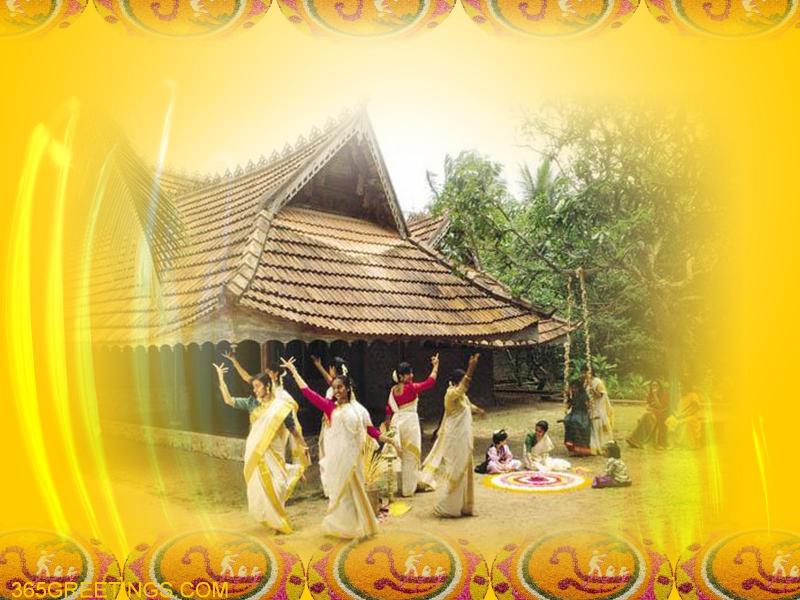Kaikottikali / Thiruvathira Kali
 Kaikottikali / Thiruvathira Kali Dance
Kaikottikali / Thiruvathira Kali Dance
Kaikottikali, popularly known as Thiruvathirakali is another popular traditional dance of Onam festival. This dance is usually performed by women in Kerala. Not just for festival of Onam, Kaikottikali is also performed during the Thiruvathira. Women of all ages perform this traditional dance with so much passion and class.
Known as an elegant and graceful dance of Lasya (where the element of beauty is predominant), Kaikottikali also include some forms of thandava, or dance for universe destruction, especially when men have participation to the performance. Kaikottikali with some form of thandava is usually performed in Malabar Area.
Costume for Kaikottikali / Thiruvathirakali
Performers are elegantly dressed with traditional Kerala garb. This is one of the main attractions of the Kaikottikali. Women wear mundu (a cloth wrapped around the lower part of the dance) and neriyathu (a cloth that covers the blouse), bordered with gold trimmings.
Women’s hairs are elegantly made with bun and garlands. Jasmine flower are generally used to accessorize the performers. Aside from the style, jasmine garland gives fragrance that enhances the dancer’s charm.
Dance Performance
Kaikottikali depicts coordination and unity among dancers. The dance usually incorporates 8 to 10 dancers. While clapping their hands, they move around, forming a circular pattern. The movement can be clockwise or counterclockwise. They also bend gracefully as the dance goes on. As they dance, the steps and movements are coordinated with the harmony of the song they’re singing. The dance usually incorporate a pookalam – an intricate flower decoration – laid in the floor. In the center of pookalam, there’s a brass lamp known as nilavilakku.
The basics of Kaikottikali are derived from another Kerala folk dance Kathakali. Bhairavi, Kamboji and Bhairavi are the usual raga being used in Kaikottikali performances. But in some instances, other traditional songs are also used. Songs of worship of Krishna, Ganapati and Saraswati are some of the most popular. In the celebration of Onam festival, songs of praise to King Mahabali is also used.
